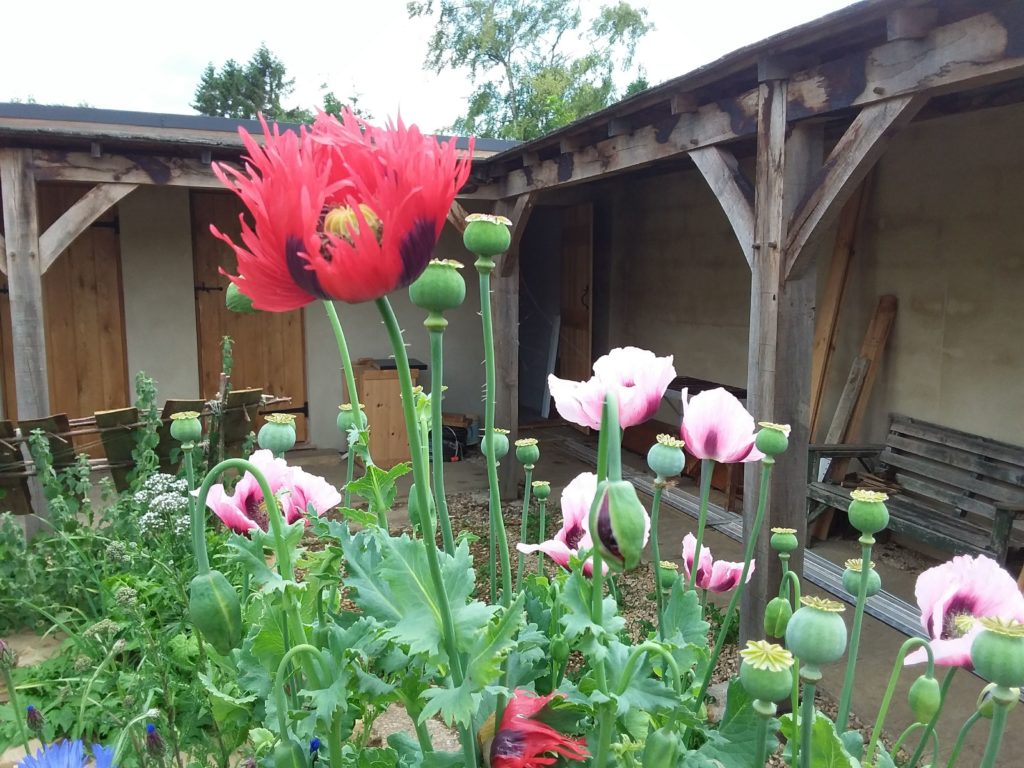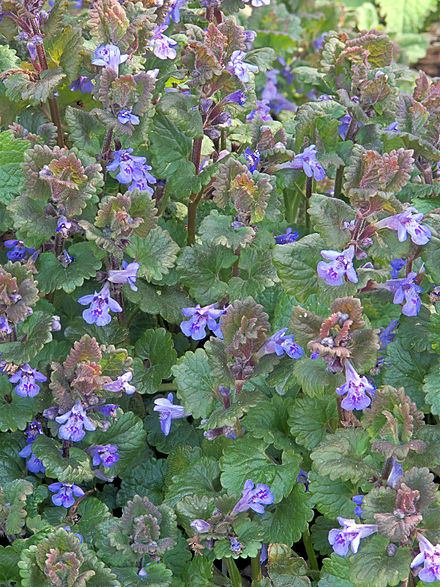We have in the garden at Rumwoldstow, a miraculous poppy! I planted one little opium poppy plant, honest, which has thrived, but one stem is determinedly producing different flowers from the rest of the plant – lovely red frilly ones instead of the usual rather meh (in my opinion) pink of the opium poppy.

I’ve also been puzzling over the identification of some of the wildflowers in the orchard. There are two different plants with small purple flowers, one which came up earlier in the year and one which is now in flower. I fell into some confusion between the two, having previously identified the latter as self-heal but not realising initially that the earlier flower is not the same thing.
And then I found hedge woundwort in the orchard, which added to the confusion as self-heal is also known as woundwort. I did some googling yesterday (with thanks to Saint Isidore of Seville) and found that the plant I thought to be self-heal is indeed also called self-heal and woundwort.
I think I have it straight now, but I felt a strong sense of connection with Carl Linnaeus and really understood why he developed his system of plant classification – by all that’s holy, just have one name for one plant, and group them in families rather than giving a similar name to a completely different plant!
- Glechoma hederacea: common name ground ivy (no it isn’t an ivy, yes Carl I hear your pain; it’s a member of the mint family Lamiaceae). Anglo-Saxon names include hōfe, tūnhōfe. It was used to flavour ale.
- Prunella vulgaris: common names self heal, heal-all, woundwort. Anglo-Saxon names may include brūn-wyrt but the references are not clear – there are many possibilities. Allegedly edible, I must try it.
- Stachys sylvatica: common name hedge woundwort. It is not clear to me whether the Anglo-Saxons had a use for this plant. They may have preferred Stachys officinalis (a.k.a. Betonica officinalis) for medicinal use, which they knew as betonie.


